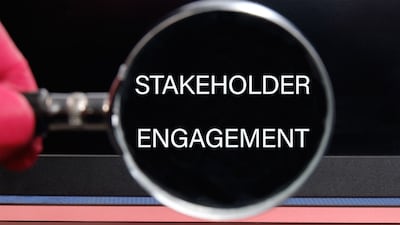“Don’t panic” is a good way to think about the FDA’s adoption of the Quality Management System Regulation (QMSR). The QMSR is the regulatory framework that harmonizes FDA’s Quality System Regulation (QSR) with ISO 13485:2016, the international medical device quality management standard used by much of the rest of the world.
The FDA finalized the QMSR in February, announcing that it would take effect in February 2026. Despite considerable lead time, the FDA’s announcement caused a furor. A cottage industry sprouted in which experts promise to teach device makers everything that they must do, today, to get ready for the QMSR.
But these directives are arguably premature and counterproductive. It’s doubtful that the FDA will camp out at device makers’ doors on 2 February 2026, ready to cite them if they aren’t fully QMSR compliant. The FDA will instead provide a raft of instructions to support the QMSR transition and impose workable timelines for this transition. The agency has said, for example, that it will not “remain silent” about QMSR requirements that may differ from QSR requirements.
So this article takes a different tact from prior QMSR warnings, arguing that device makers have time to understand and plan for the QMSR transition and that this transition needn’t have happened “yesterday.”
Instead of calling for quick action, this article considers the regulatory aspects of the QMSR transition, raising questions like, “what will regulators actually look for as the go-live date approaches? What must device makers be prepared to show regulators? What are the risks of not being fully QMSR ready on the go-live date, and how much wiggle room will regulators afford?” Savvy device makers will identify and answer such questions as they adopt the QMSR framework.
But before tackling questions like these, it’s important to consider how the QMSR works. The QMSR is based on the 2016 revision of ISO 13485, an international quality management system standard for medical devices. The FDA has been involved in the development and maintenance of ISO 13485 since its launch in 1996, and the initial version informed the QSR followed in the US today. In fact, the 2022 QMSR proposed rule maintains that the QSR is substantially similar to the 2016 version of ISO 13485.
The QMSR final rule (with the preamble) includes an executive summary, background, establishment of the FDA’s legal authority, and responses to 83 categories of comments before including the completely rewritten text of the Quality System Regulation, officially known as 21 CFR Part 820.
A Breakdown of the QMSR
The new 21 CFR § 820.1 (Scope) is largely identical to the scope of the current QSR. Although components and finished device parts remain out of scope, the FDA notes that it has statutory authority to bring these articles into scope “should that become appropriate,” and encourages component manufacturers to voluntarily comply with the QMSR. This section also describes how to address conflicts between the Federal Food, Drug, and Cosmetic Act (FD&C Act) and implementing regulations. (Spoiler alert: The FD&C Act prevails.)
21 CFR § 820.3 (Definitions) includes several significant changes. The biggest is the “incorporation by reference” of Clause 3 of ISO 9000:2015, which includes the full glossary of ISO QMS terms and definitions. Adopting this clause allows the FDA to remove several definitions (e.g., “customer,” “design validation,” “product,” “top management”) from the 2022 proposed rule.
The QMSR also replaces the design history file, device master record, and device history record with ISO 13485’s design and development file, medical device file, and medical device or batch record. The definition of “risk” is pulled from ISO 14971:2019 (which applies risk management to medical devices), but the FDA avoids incorporating the full ISO risk management standard into the QMSR, leaning instead on general ISO 13485:2016 statements requiring full lifecycle risk management processes.
Incorporation by reference is addressed in the new 21 CFR § 820.7, which declares that such incorporation “is treated as if it were published in the Federal Register and the Code of Federal Regulations. This material, like any other properly issued rule, has the force and effect of law.” This section of the QMSR then incorporates by reference the full text of ISO 13485:2016 and Clause 3 of ISO 9000:2015, with the text of 21 CFR Part 820 now only including clarified definitions and requirements that depart from these two ISO standards.
The Incorporation by Reference section also links to the American National Standards Institute Incorporated by Reference portal for a view-only copy of the ISO standards. The FDA further states that future updates to ISO 13485:2016 will not result in automatic updates to the QMSR. Instead, the agency will review and consider updates using the rulemaking process.
Next, 21 CFR § 820.10 (Requirements for a Quality Management System) ensures that links to 21 CFR Part 803 (Medical Device Reporting), 21 CFR Part 806 (Corrections and Removals), 21 CFR Part 821 (Medical Device Tracking), and 21 CFR Part 830 (Unique Device Identification) are maintained. This section also keeps the same scope for design and development requirements as the QSR, extends traceability requirements to implantable devices and life supporting or sustaining devices, and reiterates that failure to comply with the QMSR renders a device adulterated.
The Control of Records section in 21 CFR § 820.35 goes beyond simple document control to add discussions of complaint investigations, the organization of complaint handling units, and the addition of “corrections” to the corrective and preventive action vocabulary.
Finally, FDA tackles the one major deficiency it sees in ISO 13485:2016 (Section 7.5.1) in 21 CFR § 820.45 (Device Labeling and Packaging Controls), where the agency specifically requires device packaging and labeling inspections even if an automated process is used in these areas. The FDA was unsatisfied with the broad statement in the ISO standard requiring “implementation of defined operations for labelling and packaging” in production.
The Regulatory Implications of the QMSR Transition
From a regulatory perspective, what does FDA’s February 2026 QMSR go-live date mean?
It helps to frame this question against particular timelines. For example, what will device makers see from FDA six months before the go-live date? What about on the go‑live date? What about a month later and six months later?
No doubt, there will be activity and changes from the FDA and industry alike as the go‑live date approaches. Indeed, senior FDA leaders recently described work to update FDA technology systems, train staff, and revise regulations and policies to support this transition. But this work will not happen tomorrow.
While preparation and proactivity is important, it’s important to remember that FDA will enforce the QSR until the QMSR goes live. Device makers will see announcements and materials supporting the QMSR transition, especially as the effective date draws near. At the same time, they will be responsible for, and judged on, QSR compliance. Device makers must show that they satisfy the QSR during this period, and claims that they’re focused on the QMSR transition will not justify failure to do so.
What about on the QMSR go-live date? Applying our experience, we think it unlikely that FDA investigators will swoop into device firms on day one, ticketing them for QMSR deficiencies. Instead, firms completing their QMSR transition may see some FDA latitude, even if that transition is not 100% done when the QMSR goes live. The caveat is that these firms must show good‑faith work to complete the QMSR transition. This means timely, consistent, and thorough effort. Firms that wait until the 11th hour, and then beg forgiveness for their tardiness, should not expect FDA grace.
There are other, trickier, questions. For example, how should firms handle QSR surveillance inspections when remediation occurs after the QMSR takes effect? Should these firms describe how remediation satisfies the QSR, or should they align remediation to the QMSR framework? Similar questions apply to firms seeking PMA approval, where preapproval inspections precede and span the QMSR go-live date. FDA will answer some questions in the run up to the QMSR launch. Other questions may require consultation with FDA, but none of these questions should cause excess concern. A key aspect of the QMSR is its consistency with the QSR. Terminology and some documents and practices will change, but core quality requirements will not.
Device Inspections Illustrate the QMSR Transition
Imagine that, on the QMSR go-live date, the FDA arrives to inspect your device facility. No doubt, the FDA will apply the QMSR and firms that aren’t ready to show compliance will face risk.
But device makers aren’t walking a razor’s edge. After the QMSR goes live, if firms show good‑faith effort to meet QMSR requirements, FDA likely won’t pillory them for transitions that are incomplete on QMSR day one – even accounting for the raft of notifications and supporting information that FDA will publish beforehand.
This is an educated guess, not a promise, but FDA’s slow-and-steady approach to past initiatives suggests that the agency will take a similarly measured tact here. That includes giving a bit of grace to device firms that aren’t “done and dusted” by the February 2026 go-live date.
There are strategies for device firms to effectively show QMSR preparation. At the start of inspections, firms should proactively communicate that the transition is wrapping up if it is incomplete. These firms should then detail the work that’s been done, what remains to be done, and the timeline for completing this work. And this chronology must be evidenced by underlying documents. The opening meeting with FDA, which starts nearly all inspections, is an ideal time to present this information.
It’s critical to remember that, at some point, any FDA “grace” will end. This will translate into regulatory citations for firms that have not completed their QMSR transition when FDA inspects them. When FDA will stop making allowances for QMSR gaps is unclear, but we believe that day is out there.
So device makers need not freak out about QMSR compliance, but neither can they fall asleep at the switch. Two years is not very far away, and there is no guarantee about how understanding FDA will be once it flips the QMSR switch.
Eric Henry is the Senior Quality Systems and Compliance Advisor in the FDA & Life Sciences Practice of the law firm King & Spalding. After 30 years in industry, Eric joined King & Spalding in 2018, where he now advises client boards, management, and staff on a variety of regulatory compliance matters.
Steve Silverman is the president of The Silverman Group, a consultancy that serves medical product companies on regulatory, strategy, and policy issues. Steve’s professional experience includes extensive time in senior FDA roles. At the FDA, Steve directed the CDRH Office of Compliance, where he led device-quality initiatives, engaged Congress and the press, and guided the office’s reorganization.







